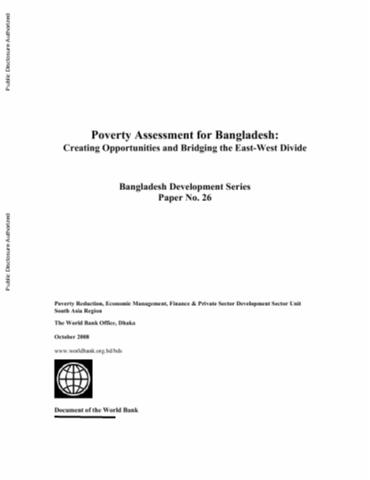Resource information
Bangladesh has made good progress in reducing poverty over the past decade despite the series of external shocks which have routinely affected the country. Poverty fell from 49 percent in 2000 to 40 percent in 2005, propelled by respectable economic growth and relatively stable inequality. These statistics are reflected in tangible improvements in poor people's lives, such as a sharp reduction in those living under flimsy straw roofs in rural areas. Unfortunately, climatic shocks such as the 2007 floods and cyclone, as well as rising food prices, have slowed the country's progress in reducing poverty. Despite these setbacks we expect that Bangladesh will reach its Millennium Development Goal (MDG) of halving the number of people living in extreme poverty by 2015. Poverty reduction is not just about improving household income, but also about enhancing human capability. Our optimism in Bangladesh's future is also based on its significant gains in human development over the past 15 years. Despite its recent progress in reducing poverty, Bangladesh remains a poor country with about 56 million poor people in 2005 and continuing disparities across occupational groups, gender, and regions. Although growing regional inequality is characteristic of many developing countries experiencing rapid economic growth, Bangladesh is somewhat unique in that the natural boundaries created by its rivers limit integration between economically unequal geographic areas. This report shows that higher productivity in agriculture, job creation in urban growth poles and promoting migration will be essential for further poverty reduction across Bangladesh. Sustaining this reduction will require maintaining the progress made thus far in slowing population growth, and providing better quality options in schooling and healthcare. Another urgent priority is to better coordinate the country's existing safety net system in order to expand effective programs in line with the needs of the poor.


